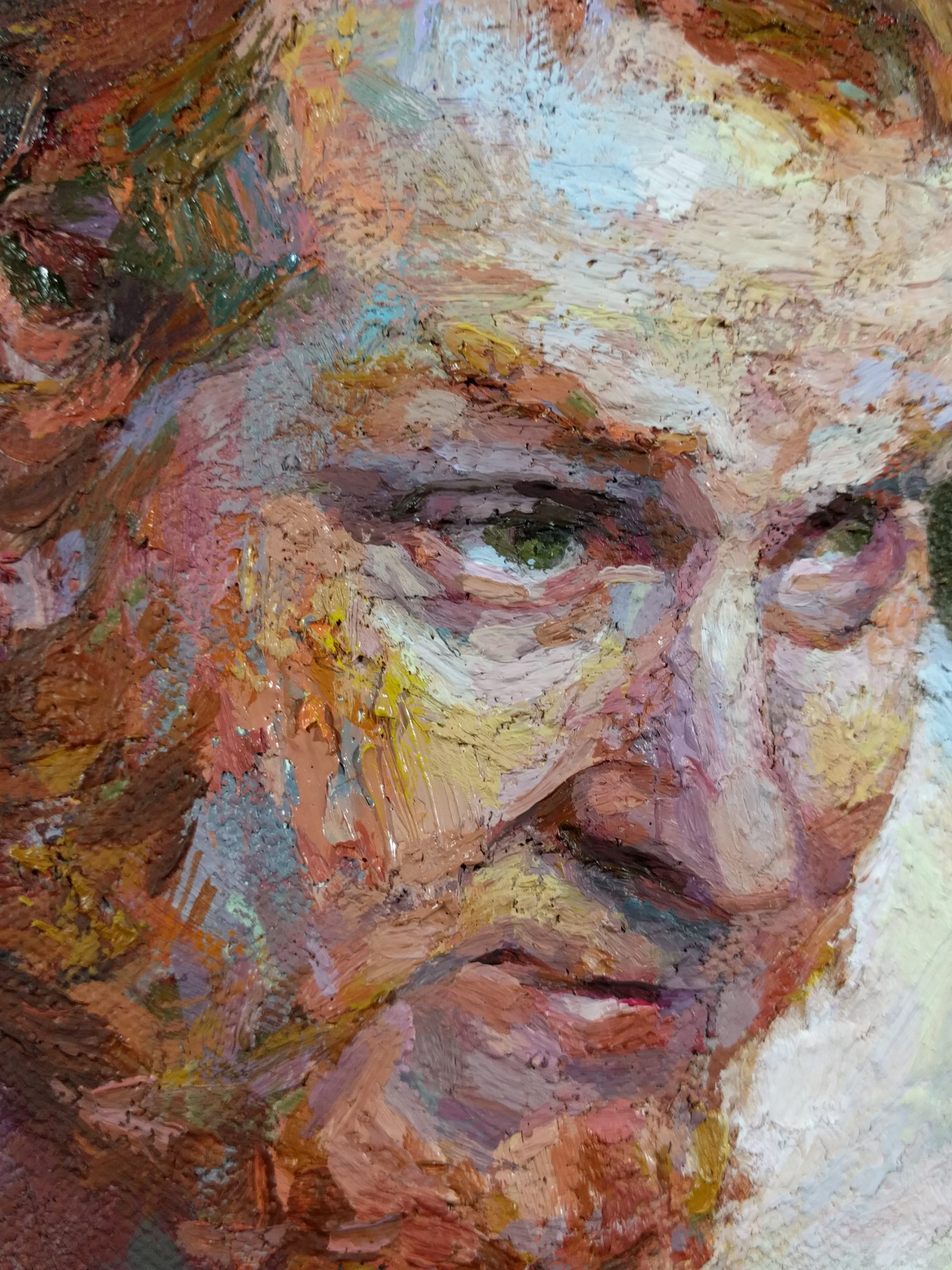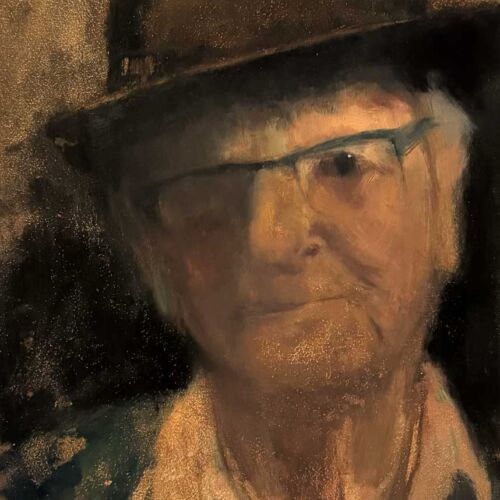Introducing the Tricks Behind Meaningful Figurative Oil Painting Styles
Wiki Article
The Evolution of Metaphorical Oil Paint: Understanding Its Historic Relevance and Modern Interpretations
The development of figurative oil paint functions as an engaging lens where to examine the interaction between artistic expression and historic context. From the careful naturalism of the Renaissance to the emotive power of the Baroque, each era has actually contributed layers of definition and method to this timeless medium. Contemporary artists, attracting from this rich heritage, are currently reinterpreting the human figure in manner ins which test conventional stories. As we check out these transformations, one have to take into consideration how the discussion between existing and past informs not just artistic technique however additionally societal representations in a progressively intricate world.Beginnings of Figurative Oil Painting
The beginnings of figurative oil paint can be traced back to the very early Renaissance in Europe, particularly in the 15th century. This duration marked a substantial departure from the inflexible types and flat depictions particular of medieval art. Musicians began to explore naturalism, stressing the human figure and its psychological expression. The development of oil paint enabled better depth of shade and detail, improving the realistic look and vibrancy of their work.
In this transformative era, numbers were often depicted within contextually rich environments, showcasing not only their physical attributes however also their mental states. Leaders such as Jan van Eyck and Titian used the tool's adaptability, utilizing layering techniques to achieve luminance and structure. This development helped with the representation of complex fabrics and the nuances of complexion, contributing to the development of portraiture and narrative scenes.
Furthermore, the Renaissance focus on humanism promoted a gratitude for individualism, which subsequently influenced musicians to produce even more relatable and vibrant numbers - figurative oil painting. Consequently, figurative oil paint became an effective car for narration and psychological engagement, preparing for future artistic movements and designs
Secret Historical Activities
Significant historical motions have shaped the advancement of metaphorical oil paint, each contributing one-of-a-kind approaches and strategies that broadened the tool's possibilities. The Renaissance noted a zero hour, stressing realism and the human type, with musicians like Leonardo da Vinci and Michelangelo pushing the limits of physiological accuracy and point of view. Following this, the Baroque period brought dramatic contrasts of light and shadow, exhibited by Caravaggio, that infused religious motifs with extreme emotionality.The 19th century introduced Romanticism and Realism, where musicians such as Delacroix and Courbet tested classical suitables, concentrating on individual expression and daily life. The arrival of Impressionism further transformed the tool by stressing the effects of light and color, resulting in a separation from traditional representation.
In the early 20th century, motions like Expressionism and Cubism redefined figurative painting through abstraction and the exploration of emotional deepness. Each of these activities not only reflected the societal adjustments of their times yet also prepared for contemporary analyses. The interaction in between these historic activities has produced an abundant tapestry of designs and philosophies, affecting modern artists in their search of recording the human experience on canvas.
Techniques and Materials Development

Throughout the Baroque period, methods such as chiaroscuro and sfumato emerged, enhancing the emotional vibration of figurative make-ups. Musicians began to explore lusters and impasto, controling appearance and brightness. By the 19th century, innovations like using pre-mixed paints in tubes revolutionized availability, allowing musicians to repaint en plein air and capture the short lived effects of light.
The 20th century saw the intro of synthetic pigments and mediums, which increased the palette and changed the uniformity of oil paints. The exploration of brand-new application strategies, such as palette knives and brushes of differing rigidity, further varied imaginative expression. Jointly, these developments show the evolving partnership between materials, strategies, and the artistic vision intrinsic in metaphorical oil painting.

Contemporary Analyses
Contemporary analyses of metaphorical oil painting show a dynamic dialogue between tradition and development, where artists challenge established norms and discover varied motifs. This advancement shows up in numerous means, as modern artists blend classical techniques with modern principles, usually resolving social, political, and individual stories.Lots of specialists draw inspiration from historic jobs, yet they infuse their pieces with modern viewpoints, using the human type as a car for commentary on culture, gender, and identification. Artists progressively try out abstraction, distortion, and mixed media, which permits for a wider interpretation of the figure and its context.
In addition, using vibrant shade schemes and non-traditional compositions usually serves to disrupt typical checking out experiences, provoking essential interaction from audiences. This change in focus expands beyond aesthetic appeals; it mirrors an expanding awareness of the intricacies of human experience in an interconnected world.
As metaphorical oil painting continues to advance, it stays a vital medium for discovering the nuances of modern life, embodying both a respect for heritage and a dedication to progressive idea. The result is a rich tapestry of expression that reverberates with the intricacies of the contemporary human problem.
Effect On Modern Art
The influence of figurative oil painting on contemporary art is extensive, as it has actually continually influenced a myriad of creative activities and techniques throughout the 20th and 21st centuries. From Expressionism to Surrealism and beyond, the exploration of the human number has actually continued to be a main theme, allowing artists to communicate complicated feelings and stories. This focus on metaphorical depiction has actually brought about a re-examination of traditional techniques, check this resulting in innovative Click This Link methods that blend realism with abstraction.
Furthermore, contemporary artists have embraced figurative oil paint as a way to address social and political issues, utilizing the medium to test assumptions of identification, culture, and sex. The revival of interest in figurative job in current years shows a hoping for connection in an increasingly electronic globe, where human experience and emotion are critical.
Additionally, the discussion in between figurative oil painting and modern-day art is obvious in the works of artists such as Kehinde Wiley and Jenny Saville, that attract on historical references while instilling their pieces with contemporary importance. Eventually, figurative oil paint continues to shape and redefine modern-day creative expression, underscoring its long-lasting importance in the art world.
Verdict
The development of metaphorical oil paint underscores its historic importance and flexibility across various creative movements. From the naturalism of the Renaissance to the stirring expressions of the Baroque and the innovative strategies of modernity, this medium has actually constantly changed. Contemporary interpretations mirror unique compositions and lively colors, promoting vital engagement with political and social themes. Eventually, metaphorical oil painting continues to be a vital medium for discovering the human experience, resonating exceptionally in today's electronic landscape.The evolution of figurative oil painting offers as an engaging lens via which to analyze the interplay in between imaginative expression and historic context.Significant historical motions have formed the advancement of metaphorical oil paint, each adding unique viewpoints you could look here and methods that broadened the tool's opportunities.As historic activities formed the trajectory of metaphorical oil paint, the products and strategies used by musicians have actually additionally undertaken substantial makeovers. figurative oil painting.The influence of metaphorical oil paint on modern-day art is extensive, as it has actually continuously influenced a myriad of creative motions and methods throughout the 20th and 21st centuries.The development of figurative oil painting underscores its historic value and flexibility throughout different creative movements
Report this wiki page